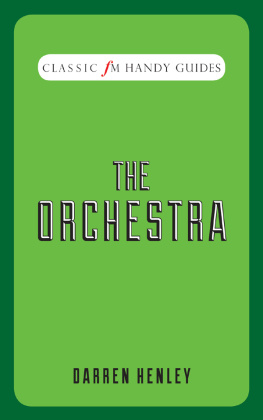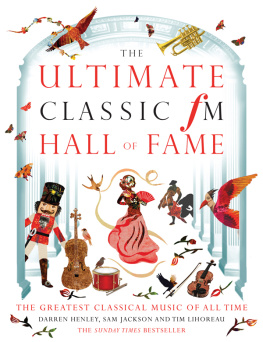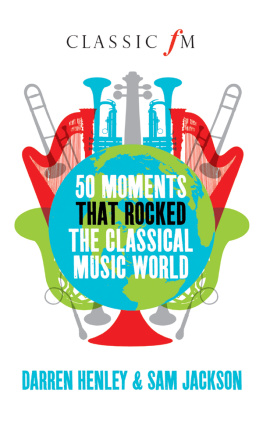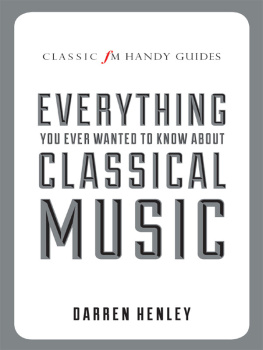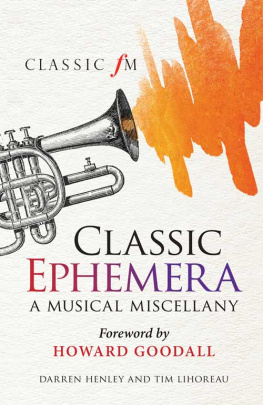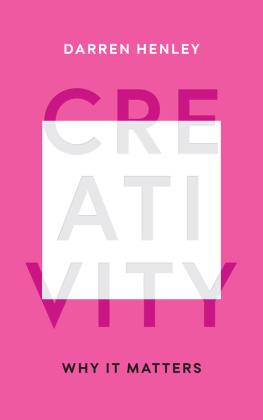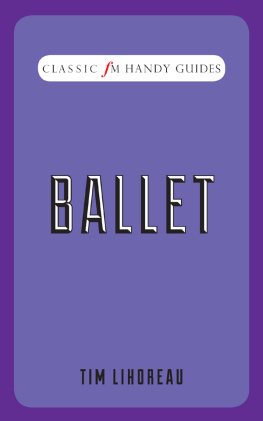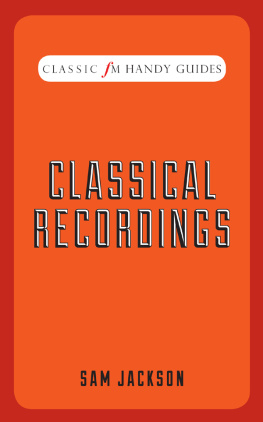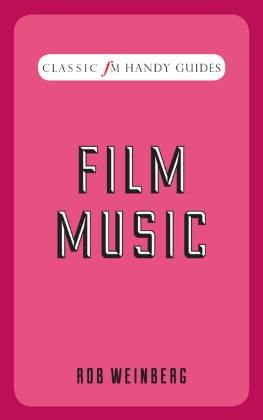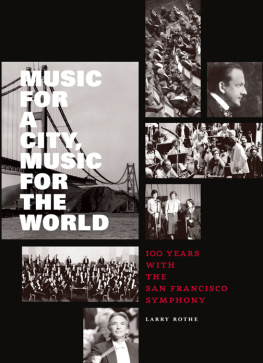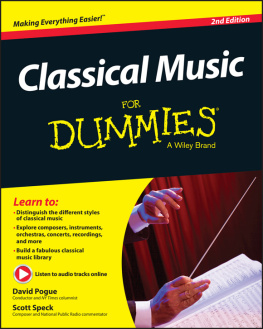THE ORCHESTRA

Contents
Introduction
A t Classic FM, we spend a lot of our time dreaming up wonderful ways of making sure that as many people as possible across the UK have the opportunity to listen to classical music. As the nations biggest classical music radio station, we feel that we have a responsibility to share the worlds greatest music as widely as we can.
Over the years, we have written a variety of classical music books in all sorts of shapes and sizes. But we have never put together a series of books quite like this.
This set of books covers a whole range of aspects of classical music. They are all written in Classic FMs friendly, accessible style and you can rest assured that they are packed full of facts about classical music. Read separately, each book gives you a handy snapshot of a particular subject area. Added together, the series combines to offer a more detailed insight into the full story of classical music. Along the way, we shall be paying particular attention to some of the key composers whose music we play most often on the radio station, as well as examining many of classical musics subgenres.
These books are relatively small in size, so they are not going to be encyclopedic in their level of detail; there are other books out there that do that much better than we could ever hope to. Instead, they are intended to be enjoyable introductory guides that will be particularly useful to listeners who are beginning their voyage of discovery through the rich and exciting world of classical music. Drawing on the research we have undertaken for many of our previous Classic FM books, they concentrate on information rather than theory because we want to make this series of books attractive and inviting to readers who are not necessarily familiar with the more complex aspects of musicology.
For more information on this series, take a look at our website: www.ClassicFM.com/handyguides.
Preface
T he great British conductor Sir Thomas Beecham left behind him a collection of witticisms on virtually every aspect of classical music life. As someone who spent his days and nights standing baton in hand in front of various groups of musicians, he developed a pretty acute understanding of what was required from them. There are two golden rules for an orchestra, he once said. Start together and finish together. The audience doesnt give a damn what goes on in between.
Other conductors have offered a slightly more nuanced view on the role of the orchestra, but many of them recognise the power of the collective body of musicians that sat before them. Kurt Masur believed that You have to change your mind with every orchestra because every orchestra has a different character. While composer and conductor Robert Schumann talked of the almost military might of a group of musicians playing together in unison, saying: I feel so entirely in my element with a full orchestra; even if my mortal enemies were marshalled before me, I could lead them, master them, surround them, or repulse them.
There is no getting away from the importance of the orchestra in classical music. While works for solo instruments or small groups of musicians are without question a vital part of the lifeblood of the genre, there is nothing quite so special as hearing a performance by an orchestra at the top of its game. And, over the years, our greatest composers have proven this by marshalling the forces of countless orchestral musicians in the creation of many of the most enduring and popular classical works of all time.
one
Back at the Beginning
O riginally the word orchestra did not mean a group of people playing music at all. Instead, it was the place where they stood or sat. In a Greek amphitheatre, the natural slope of the seats was called the loilon; the backdrop to the stage was known as the scena, and the semi-circular piece of flat ground between the two was the orchestra. Eventually, it came to mean the people who played there, too.
The modern orchestra, like the ancient one before it, was also born in the theatre, where it accompanied plays and operas. The Dresden Staatskapelle is the worlds oldest orchestra, tracing its roots back as far as 1548. It was soon joined by others, as churches, courts, cities and towns across Europe founded their own ensembles over the following couple of centuries. The virtuoso Mannheim orchestra (run by the local Elector) was particularly important in advancing the cause. The UKs oldest surviving symphony orchestra is the Royal Liverpool Philharmonic Orchestra, which was founded in 1840 and became a fully professional band in 1853.
Orchestration
Orchestration is the part of a composers job that sorts out who plays what. Usually it comes after the initial composing itself, once the central ideas have been created. Many composers consider it a completely separate procedure, and some are thought of as being greater masters of the process than others. Maurice Ravel, Hector Berlioz and Paul Dukas, for example, are all considered experts in the field.
Nikolai Rimsky-Korsakov was another such expert, making a habit of superbly orchestrating virtually everything that he laid his hands on. He was already strong in the area of orchestration while he was still at college, writing musical arrangements for the student band. He perfected his craft while he was in the navy, when he made a point of learning how to play just about every instrument of the orchestra.
Richard Wagner is worthy of a mention at the start of this book, too. When he could not get quite the right combination of orchestral colours to do justice to the sound that was in his head, he simply invented his own instrument to create it. The Wagner tuba was the result. It is, in fact, more of a big horn than a tuba. Wagner employed it to great musical effect in his mammoth four-opera cycle, The Ring.
The Make-Up of the Orchestra
The biggest section of the orchestra is made up of string instruments. In a standard-sized symphony orchestra, you might find around thirty violins, a dozen or so violas, maybe ten cellos and around eight double-basses. That is a total of around sixty or so players in all roughly two-thirds of the band. The reason that these numbers are not exact is that different composers call for slightly different musical configurations for each of their works, and in some repertoires conductors and managers can exercise a degree of choice.
The brass section typically comprises three trumpets, three trombones, four French horns and a tuba allowing the composer to paint musical pictures with three high, four middle, three low and one very low brush. The brass section is undoubtedly loud: these eleven players alone can often drown out the entire string section because of the sheer volume of sound that their instruments are capable of producing.
Next are the woodwind instruments, which these days are not necessarily made of wood. This section is made up of two or three flutes, often a piccolo, a couple of oboes, four clarinets and perhaps a bass clarinet, two bassoons and possibly a contra-bassoon.
The final part of the orchestra is a percussion section of three or four players, playing various instruments, such as timpani, cymbals, side drums, bass drums, xylophones and triangles.
One or sometimes two harpists and a pianist, who might play the celesta when required, more or less complete the complement of a full standard symphony orchestra.
A chamber orchestra operates in a similar way to a symphony orchestra, but on a smaller scale, usually having a total of only around thirty players on stage. Again, the exact range of instruments that turns up on the night will be dependent on the demands of the composers score, but each of the sections of a chamber orchestra will have fewer musicians than its symphonic big brother.

